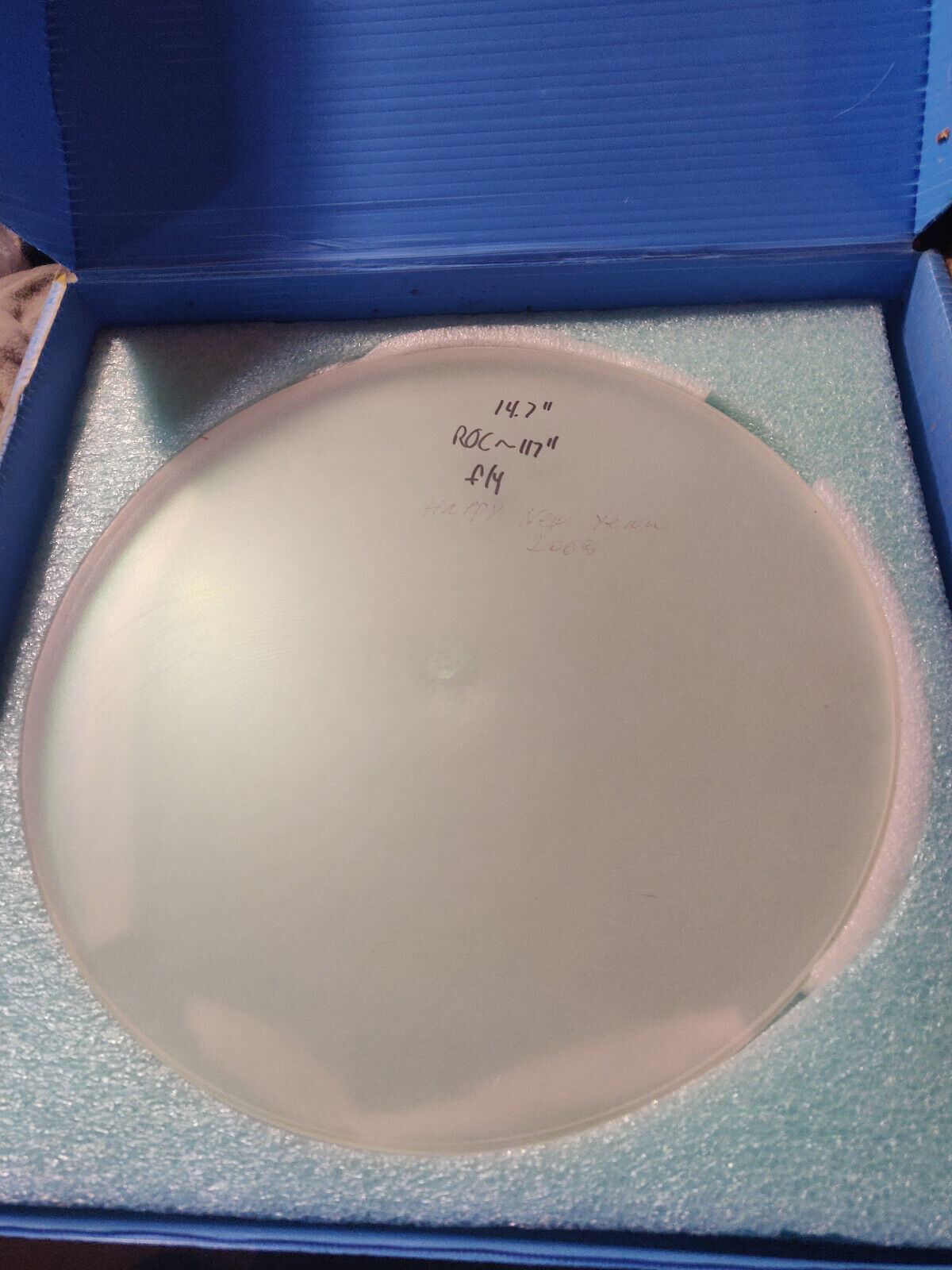F/4 Primary Mirror Blank 363mm/14.7", ROC 117" Needs Polishing and Aluminizing For Sale

When you click on links to various merchants on this site and make a purchase, this can result in this site earning a commission. Affiliate programs and affiliations include, but are not limited to, the eBay Partner Network.

F/4 Primary Mirror Blank 363mm/14.7", ROC 117" Needs Polishing and Aluminizing:
$547.00
F/4 Primary Mirror Blank 363mm/14.7", ROC 117" Needs Polishing and Aluminizing
This F/4 primary mirror blank has a diameter of 14.7 inches and a radius of curvature of 117 inches. The glass is roughly 3/4" thick, making the weight of the mirror less, at 12.2 pounds. It is made of high-quality quartz material and was manufactured in the United States.The mirror blank requires polishing and aluminizing before use, but it is a great addition to any reflector telescope setup. It is suitable for amateur astronomers and professionals alike. Buy now and take your stargazing experience to the next level.
A primary mirror with a diameter of 14.7 inches, an f-ratio of f/4, and a radius of curvature of 117 inches is suited for a range of astronomical applications, emphasizing wide-field and deep-sky observations. Here's how such a mirror can be utilized and what improvements or changes could be made, particularly regarding focal length adjustments:Applications
Deep-Sky Observations: An f/4 telescope is considered fast, meaning it has a wide field of view and can gather light efficiently, making it ideal for observing nebulae, galaxies, and other deep-sky objects. The short focal length allows for shorter exposure times in astrophotography, which is advantageous for capturing faint objects.
Wide-Field Astrophotography: The wide field of view also benefits astrophotographers looking to capture large swaths of the night sky, such as wide-field galaxy clusters, large nebulae, and extensive star fields.
Visual Astronomy: While great for deep-sky viewing, the fast focal ratio means it's less suited for high-magnification views of planets and the Moon. The lower magnification provides brighter but wider views, which might not bring out the fine details in planetary observation that a longer focal length telescope would.
The mirror blank may be polished and aluminized as is at f/4 or it may be figured to an f/4.5 or f/5 f-ratio for better planetary viewing. Either way, the 14.7"/363mm primary has incredible light gathering power, and will make a great parabolic reflector telescope. Note that the thickness of the mirror of 3/4" limits the depth that the mirror may be refigured, though regrinding to f/4.5 or f/5 should not be a problem if the owner decides to make this change.
